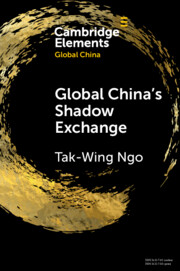Element contents
Global China's Shadow Exchange
Published online by Cambridge University Press: 05 January 2024
Summary
Keywords
Information
- Type
- Element
- Information
- Series: Elements in Global ChinaOnline ISBN: 9781108975681Publisher: Cambridge University PressPrint publication: 01 February 2024
References
Accessibility standard: Unknown
Why this information is here
This section outlines the accessibility features of this content - including support for screen readers, full keyboard navigation and high-contrast display options. This may not be relevant for you.Accessibility Information
- 5
- Cited by
